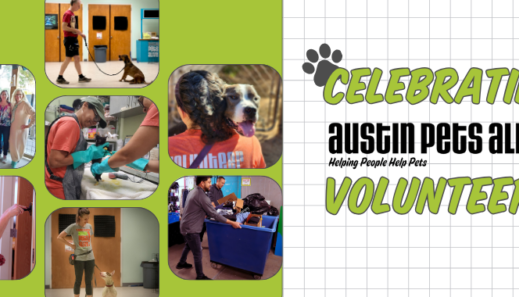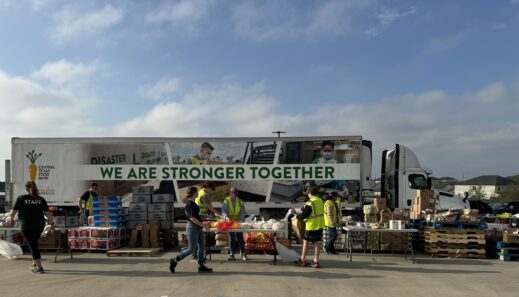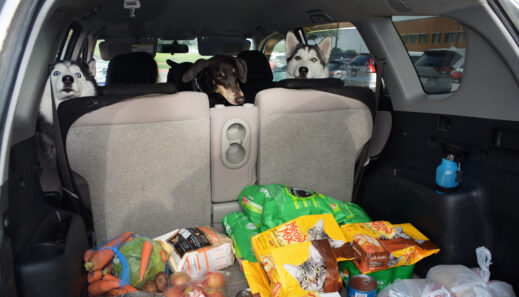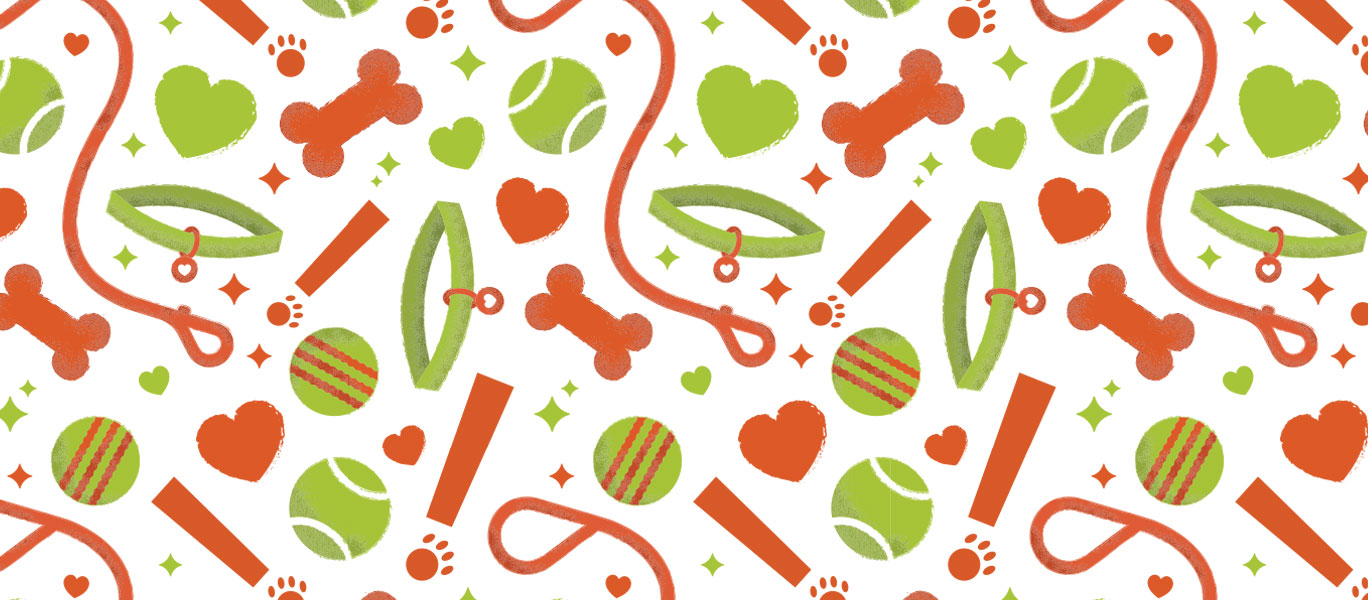
A Letter From Dr. Ellen Jefferson, Executive Director of Austin Pets Alive!
I would never have expected, in a million years, a hurricane of this magnitude and destruction to affect the regions of Texas so close to us. There is no way that we could have been prepared for it. And even if we were, I don’t know that we could have been prepared for how little help arrived quickly, as animals were about to or were actually meeting their doom.
It all started the Thursday before the Hurricane hit (Aug. 24), with a quick conversation amongst some of our team leaders – what could we do to help the shelters who were likely going to be hit? We worried together about the pets that would be euthanized or killed as these shelters prepared for disaster, as well as the animals that would be stuck there once the storm hit. Traditionally, shelters euthanize if they can’t evacuate to prevent animals from suffering when the shelter is demolished by a catastrophic event like Hurricane Harvey. So, we set out to call all of them. We created an email helpline – “[email protected]” – to receive incoming calls of distress. We pulled up a map and started googling which shelters were where, mapping them to the hurricane’s destructive path, and between all of us, we must have called 20 different shelters while crowded around my desk. A good handful responded that yes, they needed the help.
And so we mobilized. That same night, APA! staff members drove to meet Aransas County shelter halfway that night for our first evacuation transport. The next morning, many other APA! staff and volunteers jumped in vans and cars and drove in different directions to pick up animals. Many more staff and more volunteers helped with the urgent transport of animals from the danger areas, and many more stayed late into the evening at APA! to receive them. We ended up evacuating pets from around 8 shelters before the storm even hit. We were already so full that we filled our large conference room with cats and the barn and foster homes with dogs. Then we waited.
After the storm, we started to receive calls from shelters that had their electricity destroyed, their roofs caved in, their kennels flooded. They needed help, and there wasn’t time to wait and see who would step up – so we did. Even though their facilities were clearly not functional, pets continued to be brought to those local shelters and tied outside or left in crates as their owners fled. The APA! intake numbers picked up again quickly, out of sheer necessity. Everyone started working on their off days or staying incredibly late into the night over the next several days and weeks just to keep up with the intake and pets moving in, and to try to respond to as many pleas for help as possible. But this is the work of grassroots lifesaving. You do what needs to be done to give the most animals possible a chance at life.
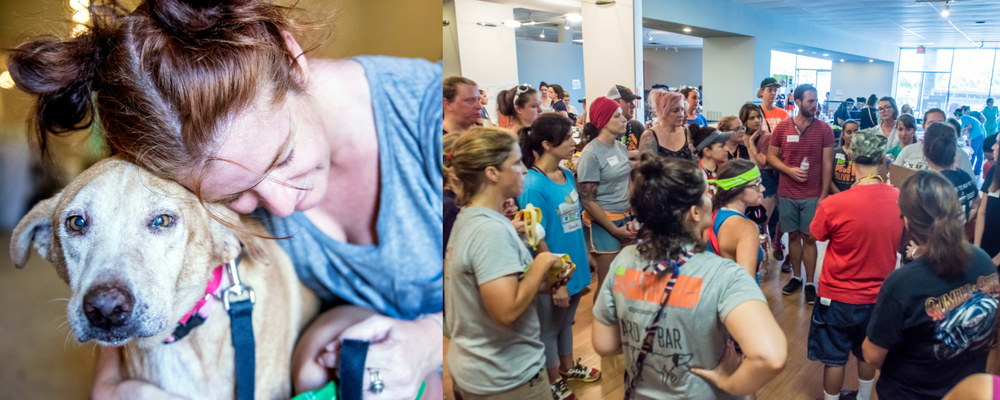
To make matters worse, by the Tuesday after the storm, we found out that all of the open intake shelters in Houston were closed due to flooding or destruction of their buildings. This meant that their large numbers of sheltered pets needing saving, too! One shelter had the dogs in crates for days on the front grass because the shelter was destroyed. And they, the organizations responsible for their community’s safety, were not able to mobilize to take in strays or participate in search and rescue. The Harvey Help email address was getting a call or email literally every second – all calls for help. At this point, we needed to bring on a team of amazing volunteers just to field all of the cries for help, as well as the offers of support.
We realized that there were very few organizations on the ground in Houston with the ability to answer calls for help, and the territory of destruction was massive. I was shocked to learn that even the animals in Facebook posts that were widely shared were having a hard time getting saved. After a Harris County commissioner said “if you have a boat, we need your help,” we realized that we could help actually save the stranded and drowning animals directly, and we knew that we needed to have boots on the ground in Houston to better coordinate lifesaving efforts.
We sent a small team down to the region and worked with volunteers who were already conducting search and rescue missions. We chose the parking lot outside of the Bass Pro Shop in Katy as our central command because it was functioning, we could get there (after several re-routes) and it was very visible. As only three APA! staff members initially drove down there (with members of the initial Best Friends emergency team) – the rest were desperately needed to run the shelter operations as our animal population continued to grow, exponentially – it was like a scene from a terrifying movie. Streets that were usually packed with cars had only a few. Cars were on the side of the roads, parked at odd angles, half covered in water; cars had been swept through water and turned on their sides; roads were still impassable. The flooding was still apparent, even on the outskirts of the city.
It took us 7 hours to make a 2-hour drive, but we finally made it. From there, a group of volunteers worked with the Zello app that became the staple of the rescue effort to target stranded animals by boat. The rest of us stayed behind to receive the animals as they were saved. We worked with the Cajun Navy and many other private groups that were doing the important work of search and rescue. We quickly found out, as people were going on these missions and picking up pets who were drowning, that the pets literally had nowhere to go. Good Samaritans that saved them were distraught at the thought of just letting them go on the streets as soon as they found dry land but, that was their only choice. There were no organizations coordinating what to do with animals once the literal initial rescue had happened. Even if a Good Samaritan took home a pet for safe keeping, there was no central lost and found a database that would pull data of any found pet for owners to search for their lost pet. This was a huge issue, and it continues to be. Municipalities are typically the ones responsible for stray/lost pets, but Harris County and the City of Houston and the other smaller ones didn’t have the capacity to do this, as their operations were limited by the destruction. So, without a shelter or a database for found or rescued pets, we had no choice but to take found and rescued pets to Austin, in addition to those that the shelters needed to remove from their buildings. At the very least, we knew that all of the pets who came into our care would be safe and at that point, priority number one was ensuring that lives could be saved. Which is how in about two weeks, APA! took in around 2,000 pets – a number that continued to grow.
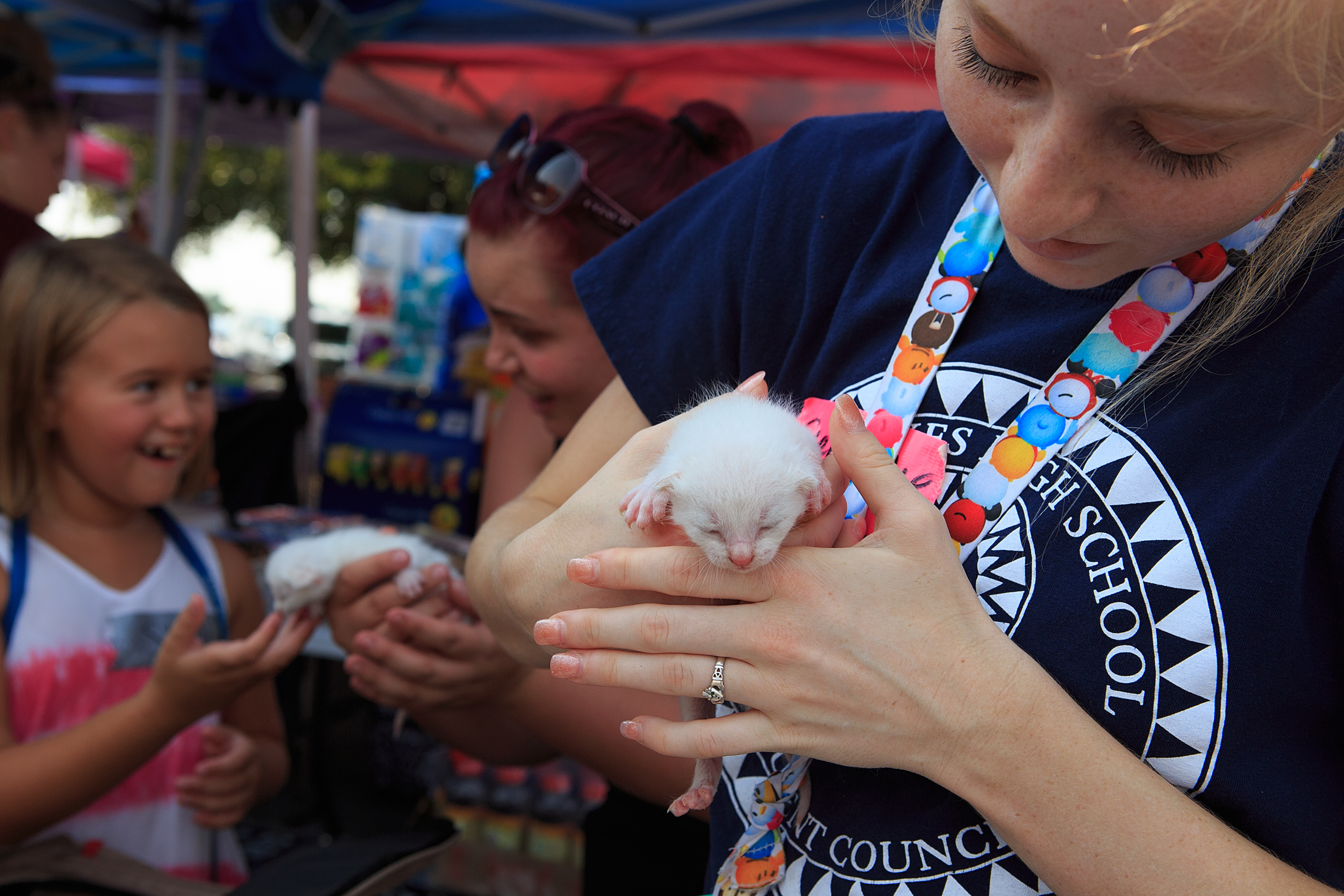
Back home in Austin, the team scrambled to find a building that could be used as a temporary shelter for incoming pets as we were quickly outgrowing the space in our shelters. It still boggles my mind how many heroic efforts were made by so many staff and volunteers to house these pets as safely as possible until they could be transferred, adopted, fostered, or for the few who came to us before a facility for stray/lost pets was set up, held for their owners. There were single days when several hundred came in! As I was in Katy seeing the truckloads of rescued pets driving up – some still drenched and dehydrated from the flood, some in the back of pickup trucks or horse trailers – there was no better feeling knowing that they were saved and would be safe, and they just had one more journey to make to get to that safety at Austin Pets Alive!.
After a grueling first couple of days in Katy, on a very lonely battlefield, Best Friends Animal Society opened up a stray-hold facility in Montgomery County, just outside of Houston, which allowed us to start sending stray and potentially owned lost pets to them. This was a huge win for families looking to be reunited with pets and after their Katrina experience, Best Friends was the best organization to manage this! We continued to take the shelter surrenders and the owner surrenders to keep the pressure off the local shelters that were trying to open their doors and accept stray pets too. The next day, both big Houston-area shelters reopened their doors for strays. However, the shelter/owner surrenders continued to be overwhelming and with no indoor building in Katy – we were still operating outside, on an asphalt parking lot – they all continued to need Austin to save their lives.
After some serious networking in Houston, specifically with Houston Pets Alive!, we were able to secure a 40,000 square foot, flood-damaged building to use as a local temporary shelter. The “APA!- Houston” temporary shelter, funded and managed by Austin Pets Alive!, opened on Sept 6th at 8620 Stella Link Road. This allowed us to start keeping pets that came to us in Houston and things were starting to work out. Lost pets went to Best Friends, surrendered pets to the APA!-Houston team, and severe medical/behavioral cases to Austin. We all had our piece, which made it so much more manageable.”
A huge number of shelter and owner-surrendered pets that came to APA! found new homes via transport to partner No Kill shelters across the country who were eager to help us with this huge influx of pets in need. Of those not transported to different locations, hundreds went to foster and hundreds more got adopted (around 700 dogs and nearly 600 cats!). Many pets are still at our main shelter location waiting to get adopted – while we normally have around 160 dogs at our Town Lake location, we are currently caring for about 240 thanks to the use of empty kennels that were formerly not in use. And of the cats we have onsite, around 80% are Harvey rescues. The work here has been nothing short of amazing, and it would not have been possible without you, our incredible supporters, donors, and volunteers. Truly – you are lifesavers, and we are more grateful than we will ever be able to express.
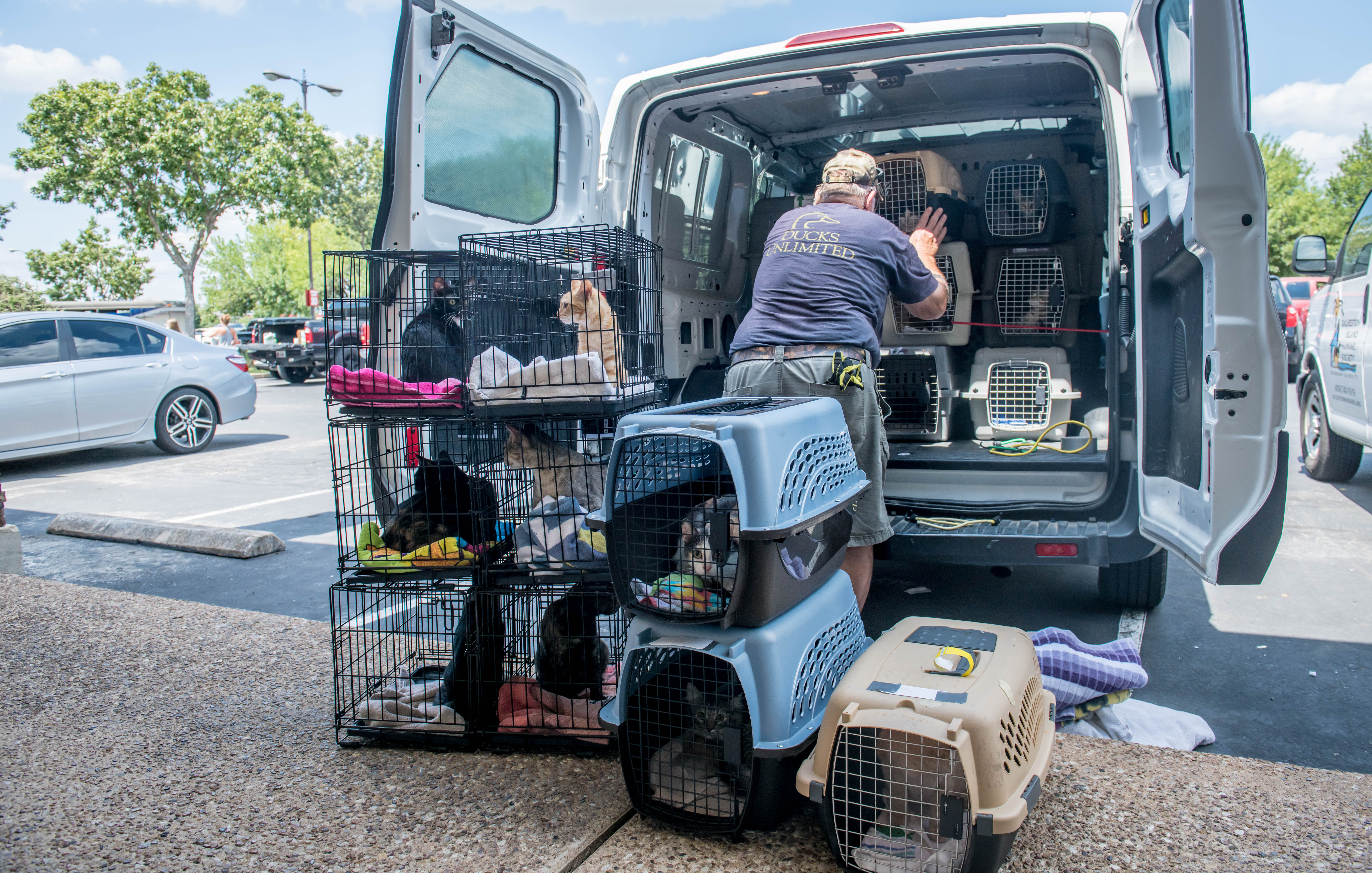
There is still much work to be done. To help families reunite, 17 national nonprofit organizations and private companies, as well as APA!, have banded together to create a central website to help people navigate finding a lost pet. The website, FindMyLostPet.com, launched today. Family reunification is of paramount importance to us, so we’ve worked hard to microchip every pet that came through our Katy/Houston/Austin locations and contact owners, but we know not all owned pets are microchipped. We strictly only consider pets not to have an owner, and thus eligible for adoption, if they came to us from a shelter or were surrendered by their owners. For the around 100 potentially owned pets still with APA! from when the storm first hit, before Best Friends had opened their facility, we have listed all of them on the PetHarbor.com database and will continue to care for them until we can confirm whether or not they have owners. We’re also close to being able to share a database of potentially owned animals in APA!’s care on our website.
The APA!-Houston facility which is operated by Austin Pets Alive! at Stella Link is rapidly evolving and is really important. We’ve had to hire a Houston-based group of temporary APA! employees to care for the animals and manage intake/transport. I am going there weekly to continue helping. We work closely with Houston Pets Alive!, who lends us their foster base and volunteers and we continue to recruit both local and out-of-town volunteers. We have transported about 800 more animals out of that facility to other No Kill groups ready to help around the country. As the hurricane reconstruction begins, we are hyper-focusing on euthanasia lists from other shelters as well as shelters that are truly inundated after the storm with pets that they can no longer care for. This has not slowed down. There continues to be a lot of very urgent need in places like Beaumont, Vidor and Orange. The situation there is very bleak, so our Houston facility will continue to help in any way we can.
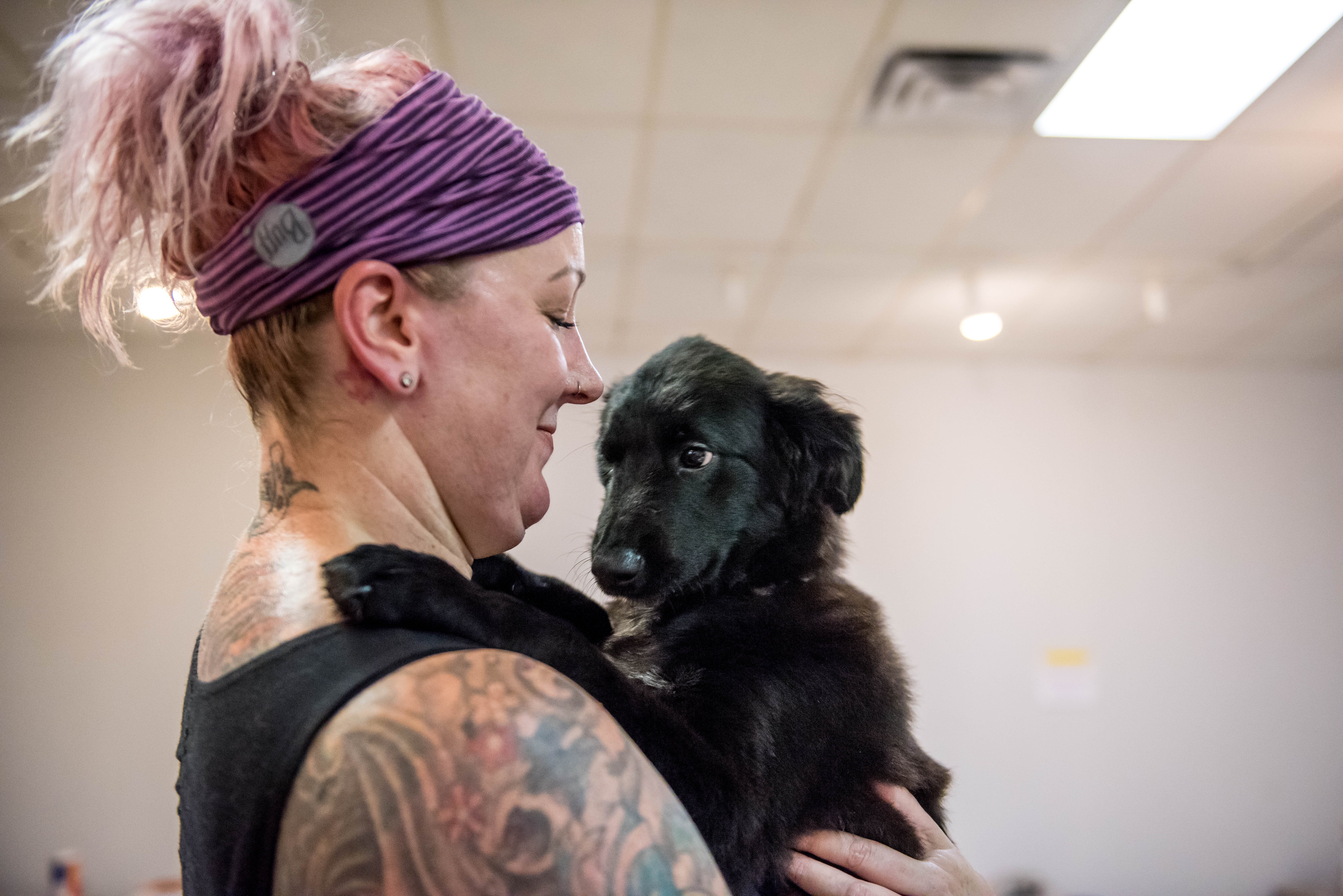
With the very initial triage work completed but the urgent need continuing, we are carving out some time to focus on the big picture a bit. We see a Metroplex (Houston), that was far away from No Kill, now actually functioning as a No Kill city in part because of our work. We see that if we can bolster up the programs of the awesome group, Houston Pets Alive!, there is a strong possibility that Houston can maintain No Kill. Who would have thought that a hurricane could be the reason a massive city becomes No Kill? At the same time, we need to come to grips with the fact that our organization can be a regional support system for Texas, and that will take ongoing hard work. No matter what the end result is, we believe that the hurricane-related work will take months to finish and for a new normal to take place (which hopefully includes No Kill).
One thing is clear: there is a huge need for an immediate, “build the bicycle while you are riding it,” lifesaving surge in disasters. Austin Pets Alive! just upped the game in animal welfare natural disaster response efforts everywhere by jumping in because it was necessary and by doing what we do best: saving lives. We didn’t do it for glory. We did it because it is the right thing to do. I can’t believe how high everyone jumped and what was accomplished with no preparation or warning…individuals, partner organizations, cities and businesses, alike. This would not have been possible without all of the collaborations that took place.
I feel honored to be a part of something so special, the kind of thing that happens very seldom, something that we all want in life – a true understanding of place and purpose. Our place is APA! in Austin, the largest and safest place in America for pets, and our purpose, to give every dog and cat a chance at life, makes us move mountains.
To our supporters: thank you for your deeply important part in saving lives. This was an effort made by our entire community, from Austin to Houston, New York to California, Colorado to Toronto – and beyond. Every person had a role to play, and still does. And everyone stepped up to create the most good possible for animals that needed our help.
Please know that APA! will always do our best to do what is right, no matter how difficult it is.
– Ellen

